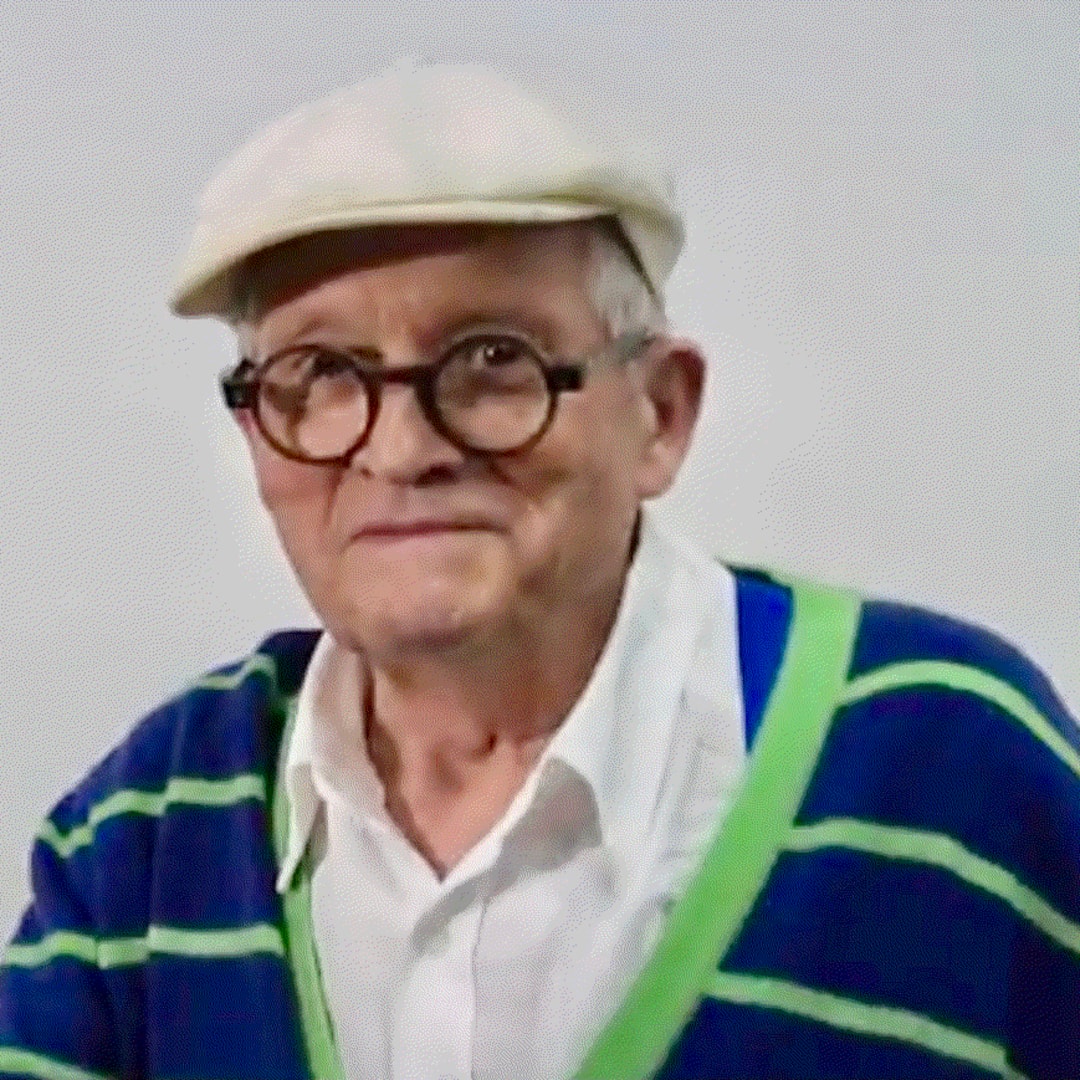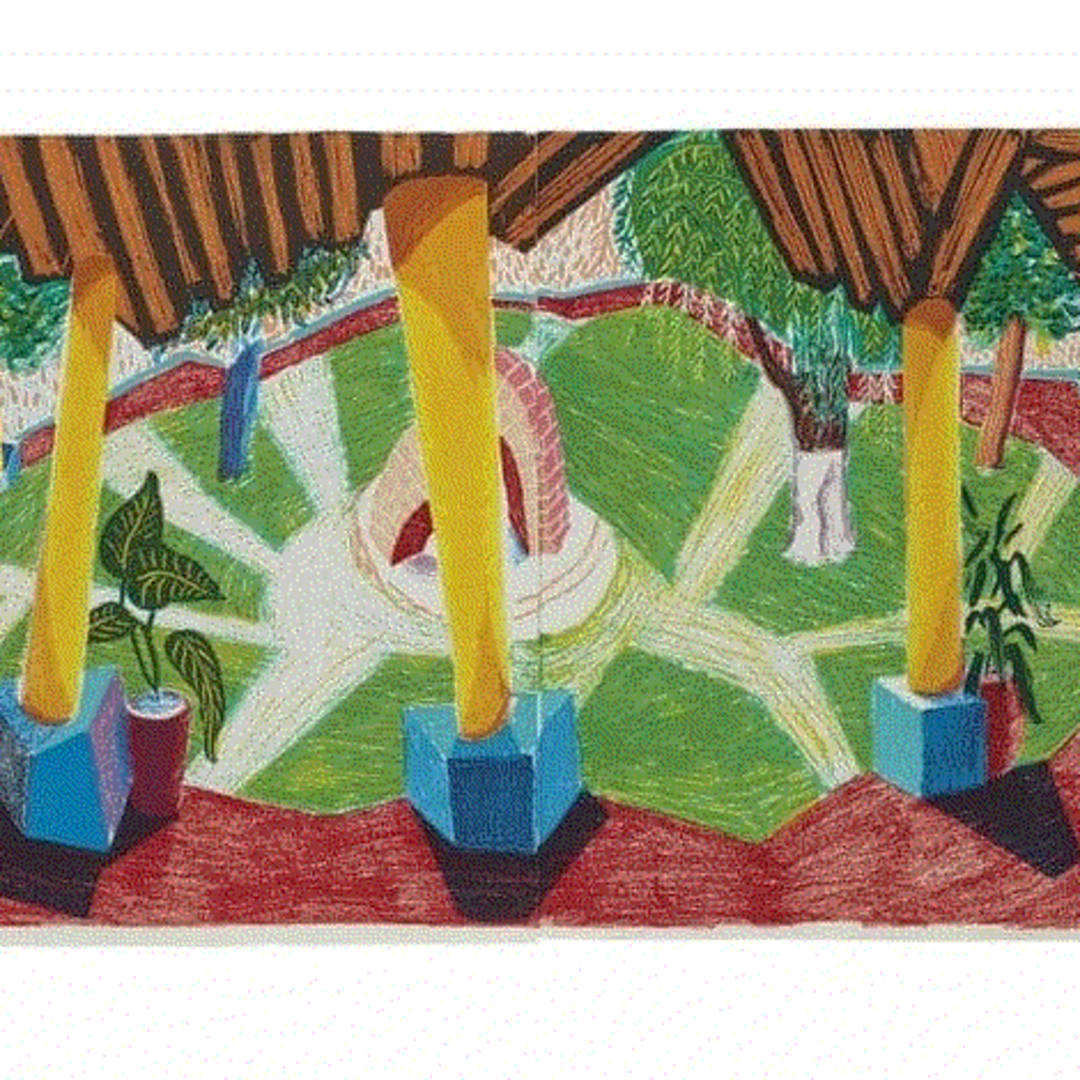David Hockney has always marched to the beat of his own drummer. In 1963, his final year at London’s Royal Academy of Art, he refused to complete an essay and a female figure drawing required for graduation. He said that he wanted to be judged on the value of his own artwork and submitted a painting called Life Painting for a Diploma instead. He was given his diploma.
He turned down a knighthood and refused a commission to paint a portrait of Queen Elizabeth. He did accept the Order of Merit and created a stained-glass window for Westminster Abbey to commemorate the 65th anniversary of the Queen’s reign.
Like his father, David Hockney was a conscientious objector and did his military service by working in British hospitals.
Hockney has always had an appreciation for tools and technology that are useful in creating great artworks. His book, Secret Knowledge: Rediscovering the Lost Techniques of the Old Masters,infuriated many in the art world. His research led him to conclude that great artists like Caravaggio, da Vinci and Vermeer used lenses and mirrors to create their realistic works.
Hockeny has used the Polaroid, iPhone, iPad and computer programs to create many of his own works. He had a minor stroke in 2012 and, at age 86 has had diminished hearing, but says that the hearing loss has enhanced his other senses.
He has been living on a farm in Normandy for the past seven years, painting the landscape and the surroundings in his farmhouse. Looking through his sketchbook. it’s apparent that Hockney can turn the most seemingly mundane object that he sets his sight on into a masterful work of art.
In the mid-1970s, after moving from his home in Yorkshire to California, he began working with master printer, Kenneth Tyler. They collaborated on Hockney's Moving Focus Series, which examines the question of perspective in composition.
Hotel Acatlan: Two Week Later, from the Moving Focus Series, available at VFA, is based on sketches that Hockney made on a trip to Mexico. His car broke down in the middle of his trip and he stopped at the Acatlan Hotel. He sketched the hotel’s courtyard on his second day at the hotel and again on his way home. The figure in the lower right corner is a tribute to his mother, based on the 1954 portrait, Woman with a Sewing Machine.
In a few weeks, a ceramic cat that Hockney made in 1955, when he was a young student at the Bradford School of Art, will be sold at an auction house in Essex in the U.K. The cat was a gift to a couple who sheltered Hockney and a fellow artist from a storm. The pair were hitchhiking to London and the couple gave them tea and helped them to dry off before resuming their journey. Hockney sent them the cat and kept in touch with the couple through handmade greeting cards and letters. The cat is expected to sell for at least $48,000. The owner of the ceramic cat, who sheltered Hockney and his friend, is now in his 90s and said that he is selling it to benefit the young members of his family.
David Hockney holds the auction record for a living artist, when, in 2018, his 1972 painting Portrait of an Artist (Pool with Two Figures) sold at Christie's for $90.3 million.
References:
Farah Never. David Hockney Wouldn’t Paint the Queen. But He Made Her a Stained-Glass Window. The New York Times/Art & Design. October 2, 2018.
Adam Schrader. A Rare Ceramic Cat Made By David Hockney While He Was Hitchhiking as an Art Student Could Net $48,000 at Auction. Artnet News. October 13, 2023.



